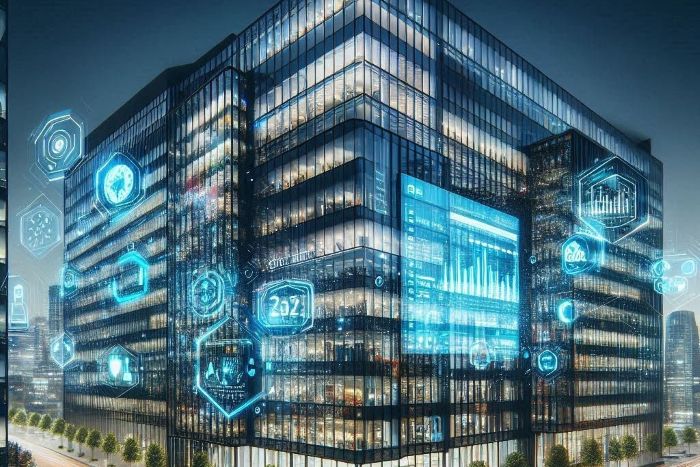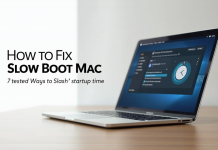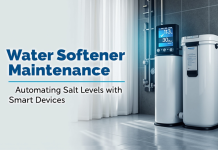Technology is pushing the building industry to new heights every year, and there’s no sign of it slowing down. As 2025 draws to a close, it’s smart to ask what’s next. What building health innovations should building owners and operators focus on to keep occupants healthy, safe, and productive in 2026?
With regulators demanding more transparency and tenants expecting comfort as a baseline, the answer lies in the right PropTech tools. Let’s talk about innovations that will define building health management in the coming year.
Table of contents
PropTech Tools Moving Building Health into the Future
- IAQ Sensors Go Predictive – Next-generation indoor air quality sensors are learning how to forecast problem periods before they happen. Integrating them with HVAC controls lets buildings adjust themselves in real time to keep the air cleaner, all by using AI-powered analytics.
- UVC Robotics and Autonomous – Disinfection UVC robots are quickly evolving. In 2026, expect machines that map high-risk zones using historical data rather than just following fixed routines. This kind of targeted cleaning will maximize both safety and efficiency across entire portfolios.
- Leak Detection Gets Smarter and Faster – The future of leak detection is hyper-responsive, using sensors that not only spot moisture but also analyze pipe vibration to predict failures hours or days before leaks happen. Instant alerts can now go right to maintenance apps for immediate response.
New Monitoring Solutions on the Horizon
Wastewater Biosurveillance Will Be Mainstream
Soon, building operators will consider wastewater biosurveillance a must-have, not a luxury. By monitoring for pathogens or chemical spikes in real time, teams can pinpoint outbreaks or contamination risk early. That’s how you make big, pandemic-level threats manageable.
To make biosurveillance data reliable, facilities are pairing real-time analyzers with better primary treatment. When solids are managed upstream, samplers capture more representative flow and sensors foul less often. For campuses and large commercial sites, understanding how clarifiers separate settleable solids and promote flocculation is foundational—see clarification in wastewater management for a quick primer on how clarifiers work and where they fit in modern treatment trains. The payoff is cleaner influent to sensors, fewer nuisance alarms, and easier pathways to onsite recycling programs.
Smart Pest and Termite Detection Tools
Rather than waiting for visual signs, smart pest monitoring uses sensors and machine learning to track insect or rodent activity, even behind walls. Advanced thermal imaging can spot termite heat signatures with incredible precision.
Many happy customers have relied on the team at axcarolinas.com because their commercial pest control and termite control technology integrates with digital monitoring, so facility teams gain both peace of mind and actionable early-warning tools for long-term building health.
Smart buildings act before problems start.
Raising the Bar for Security and Operations

Zero-Touch Entry and OT Security
Touchless access, operated through biometric authentication or mobile credentials, will become the new standard in 2026, as will advanced operational tech security.
Instead of a piecemeal approach, OT cybersecurity will work seamlessly with IT controls to lock down building networks and prevent both digital and physical breaches.
Digital Twins and Predictive Cleaning: Two Game Changers
Digital twins are evolving into living, learning assets. They will help ops teams stress-test emergency procedures and simulate comfort strategies, making guesswork obsolete.
Predictive cleaning systems for building health will take feedback from occupancy sensors and IAQ data, letting janitorial schedules flex based on real use, not static times.
The Future of Technical Data Meets Real Impact
Every platform is learning how to turn noise into knowledge. Acoustic analytics help spot failing equipment from strange sounds alone. ESG reporting platforms are automating compliance, showing each energy and water-saving action in formats demanded by cities and investors. Computerized Maintenance Management Systems, or CMMS, will integrate all building data, mobilize maintenance teams, and even predict inventory needs before a part fails.
Where Could All This Land? Here Are Three Possible 2026 Scenarios
- Scenario 1: A university campus uses the next wave of air quality and biosurveillance to identify and isolate a norovirus spike, keeping classes in-person and avoiding panic.
- Scenario 2: A mixed-use developer uses leak and acoustic analytics sensors to preemptively service a water main, eliminating what could have been a six-figure disaster.
- Scenario 3: A logistics provider tackles persistent rodent activity by leveraging commercial pest control tools from axcarolinas.com that are fully integrated into their building automation system, shrinking loss from pest incidents to near zero.
The Next Level for Building Health: From Data to Action
While 2025 focused on filling buildings with sensors, 2026 will be all about harnessing every signal for smart decision-making. Those who embrace PropTech’s full potential will set the benchmark for wellness and safety. The most successful buildings will not just react to issues; they will predict and prevent them, actively shaping the future with building health technology leading the way.











